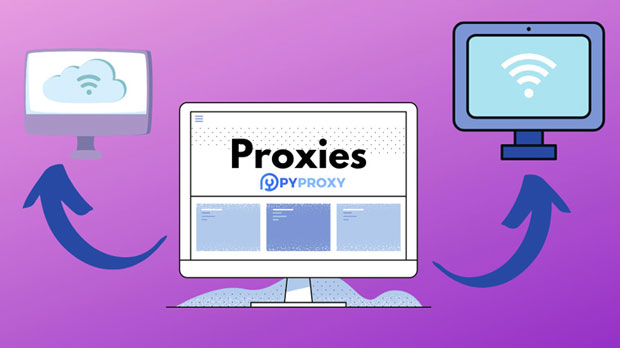In the fast-paced digital world, where anonymity and security have become paramount, proxies play a crucial role. Dynamic residential proxies, in particular, offer high levels of anonymity by providing IP addresses assigned by Internet Service Providers (ISPs) to real devices. Among the several proxy services available, PYPROXY and PrivateProxy stand out, each offering unique strategies for switching IP addresses. In this article, we will delve deep into the comparison of these two services' IP switching strategies, their benefits, and the factors to consider when choosing between them. Understanding Dynamic Residential ProxiesBefore diving into the comparison, it’s important to understand what dynamic residential proxies are and why they are essential for online tasks. Dynamic residential proxies are IP addresses assigned by ISPs to real homes, which makes them much harder to detect and block compared to datacenter proxies. These proxies offer an edge when browsing the web anonymously, scraping websites, or managing multiple social media accounts. The key aspect of these proxies is their dynamic nature, meaning the IP address can change automatically after a set duration, or on demand, which is crucial for evading IP bans.What is Pyproxy?Pyproxy is a well-known provider of dynamic residential proxies that offers IP rotation through an automated system. The service provides users with access to residential IP addresses sourced from real devices, ensuring high anonymity and minimal risk of IP bans. Pyproxy's switching strategy is designed to be highly customizable, allowing users to set the duration for each IP address used, making it a good option for activities like web scraping and large-scale social media management.One of the standout features of Pyproxy is its ability to rotate proxies at predefined intervals or based on custom configurations. This ensures that users can continue their tasks without facing bans or restrictions, especially when handling large amounts of data.What is PrivateProxy?PrivateProxy, on the other hand, also provides dynamic residential proxies but focuses more on offering dedicated IPs that are rotated at specific intervals. Their switching strategy is generally more straightforward compared to Pyproxy, with less customization but still effective in ensuring that users have access to clean, unblocked IP addresses.PrivateProxy’s network primarily revolves around delivering high-quality, high-speed IP addresses to its users, with a more rigid switching protocol. While it may not offer as much flexibility as Pyproxy, it provides users with stable and secure connections for activities such as ad verification, SEO monitoring, and bypassing geographic restrictions.IP Rotation Strategies: Pyproxy vs. PrivateProxyWhen comparing the switching strategies of Pyproxy and PrivateProxy, it’s important to consider the different types of IP rotation methods each service offers.Pyproxy’s Rotation StrategyPyproxy offers a more advanced rotation strategy, where users can choose between session-based rotation and time-based rotation. The session-based rotation ensures that a new IP is assigned to each user session, while time-based rotation changes the IP address after a specific amount of time has passed. Additionally, Pyproxy provides the option to set custom rotation intervals, making it ideal for users who require maximum control over the IP rotation process.PrivateProxy’s Rotation StrategyPrivateProxy takes a more traditional approach to IP rotation. Users are provided with a pool of residential IPs, and the service rotates these IPs at regular intervals. While users can’t customize the rotation frequency as much as they can with Pyproxy, the service is known for providing stable IPs, ensuring minimal downtime during rotations. This approach works well for users who don’t require constant, dynamic rotation and prefer a simpler solution.Customization and FlexibilityPyproxy Customization OptionsPyproxy shines in terms of flexibility. The service offers an array of customization options, allowing users to fine-tune the frequency and method of IP switching. Whether you need a new IP after every session or after a fixed amount of time, Pyproxy’s flexibility ensures you can tailor the experience to your specific needs. This is particularly useful for users in fields like data scraping, where the risk of IP bans is higher.PrivateProxy Customization OptionsPrivateProxy offers fewer customization features compared to Pyproxy. While the service ensures efficient IP rotation, users are limited in their ability to customize the frequency of changes. This may be a disadvantage for users who require a more personalized approach to proxy switching. However, PrivateProxy’s setup is relatively easy and user-friendly, which may appeal to those who are new to using proxies.Speed and PerformanceWhen using proxies, speed and performance are crucial factors to consider, especially for time-sensitive tasks like ad campaigns or market research.Pyproxy’s Speed and PerformancePyproxy is known for providing fast and reliable IPs, especially when set up with a robust rotation strategy. Users can expect high-speed connections, which are important for large-scale web scraping tasks or accessing geographically restricted content. The dynamic rotation system also reduces the chances of IP bans, which ensures that the user’s session remains uninterrupted.PrivateProxy’s Speed and PerformancePrivateProxy also offers excellent speed and reliable connections, though users may experience occasional latency during IP rotations. Since PrivateProxy’s IPs are more rigid in their switching intervals, some users may face delays if they require a rapid change of IPs. However, for most regular proxy tasks, PrivateProxy’s performance remains stable and satisfactory.Security and AnonymityPyproxy’s Security FeaturesSecurity is one of the primary advantages of using residential proxies, and Pyproxy excels in this area. The rotation strategy and use of real residential IPs ensure that users can maintain a high level of anonymity. Pyproxy’s service is designed to reduce the risk of detection, making it ideal for tasks that require complete privacy.PrivateProxy’s Security FeaturesPrivateProxy also provides a secure and anonymous browsing experience. Its use of dedicated residential IPs ensures that users’ activities are difficult to trace. However, the more rigid switching protocol may make it slightly easier for advanced anti-proxy systems to detect, which is something to keep in mind for high-risk activities.Cost and Value for MoneyWhen choosing between Pyproxy and PrivateProxy, cost is a major consideration for many users.Pyproxy PricingPyproxy’s pricing tends to be more flexible, with users paying for the level of customization and rotation they require. While it may be on the pricier side for those seeking maximum control, it offers good value for money for users who need advanced features and high security.PrivateProxy PricingPrivateProxy offers a more affordable option, especially for users who don’t need as much customization in their IP rotation strategy. For straightforward tasks like ad verification or SEO monitoring, PrivateProxy provides great value at a reasonable price.Choosing Between Pyproxy and PrivateProxyThe choice between Pyproxy and PrivateProxy ultimately depends on your specific needs and budget.- If you need highly customizable rotation, maximum anonymity, and flexibility, Pyproxy is the better choice.- If you’re looking for a simpler solution with stable performance at a lower price, PrivateProxy may be more suited to your needs.In conclusion, both Pyproxy and PrivateProxy offer excellent dynamic residential proxy services, but they cater to slightly different user needs. Pyproxy excels in customization, flexibility, and advanced IP rotation, making it ideal for users who need high levels of control and security. On the other hand, PrivateProxy offers a simpler, more affordable option for users who do not require as much customization but still need reliable and secure IP rotation. By understanding the differences in their switching strategies, you can make an informed decision on which service best aligns with your requirements.
Oct 13, 2025


































































